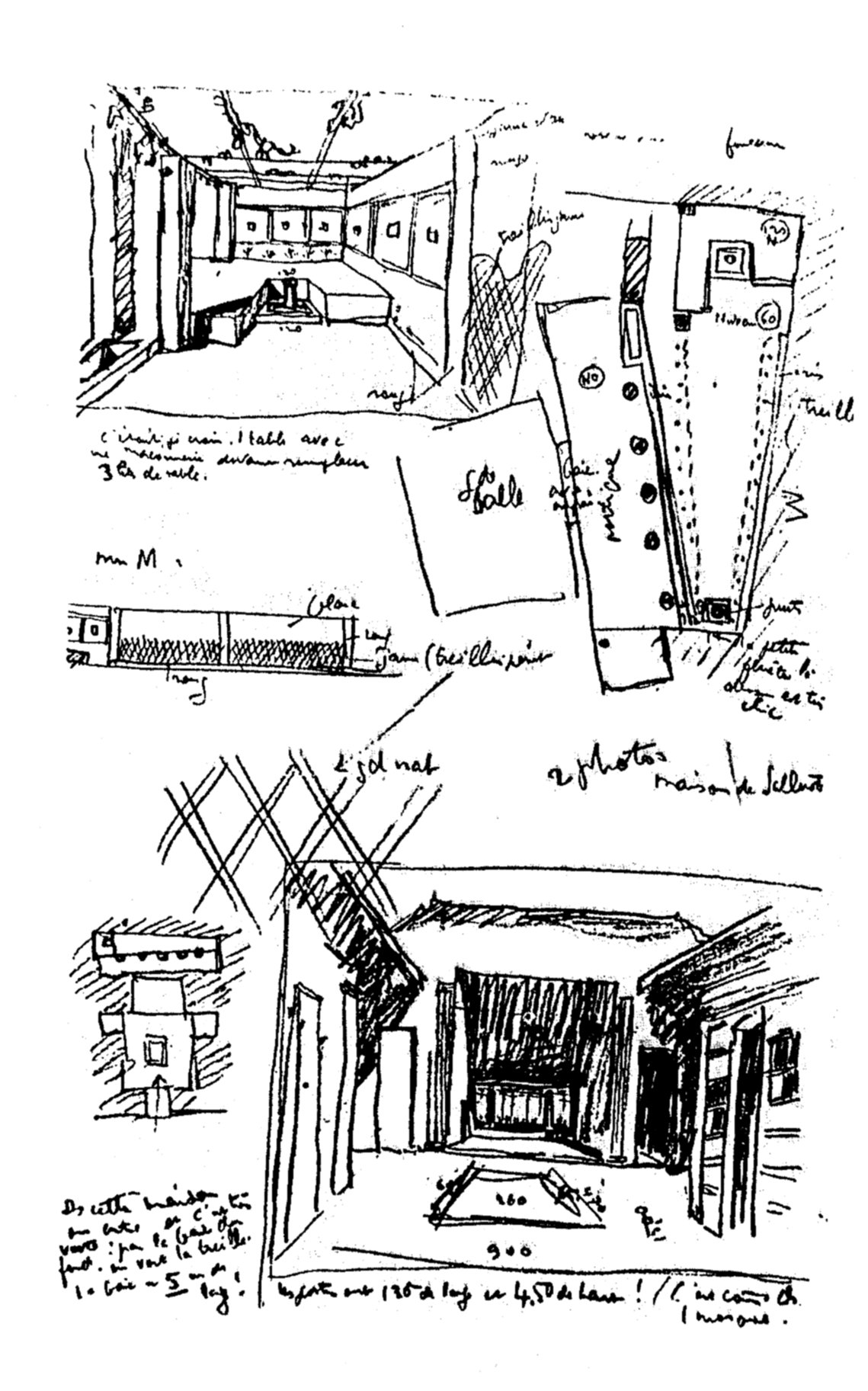Antiikin Rooman seinämaalaus – arkkitehtuurin osa vai turha koriste; antiikin auktorien tulkinnat ja varhaisten seinämaalausten kohtalot / Ancient Roman Wall Painting – An Essential Part of Architecture or Meaningless Decoration; Ancient Texts and their Interpretations
Anu Kaisa Koponen

Fig 1. Sketches by Le Corbusier in the Casa di Sallustio, Pompeii.
Abstract
Ancient texts have been traditionally cited as documentary evidence while interpreting ancient Roman wall paintings. Although these frescoes have a very close relationship with architecture, this character has been totally neglected because of the influence of the ancient authors. In the beginning of the official excavations on the Bay of Naples (1738-1764) wall paintings were destroyed by cutting out central pictures, which were then presented as panel paintings, since only panel paintings were praised by ancient authors, such as Pliny the Elder. The earliest ancient Roman fresco finds (1480-1738) have not been extensively and systematically studied. Therefore in this thesis I present these earliest ancient fresco finds and describe their later fates. It seems that the evaluation of early ancient Roman wall paintings both in Rome and on the Bay of Naples were based on few remarks of ancient authors. This literal tradition originates in the Renaissance with the newly awakening interest in the texts of antique.
The archaeological evidence reveals that there is a remarkable contradiction between ancient texts and murals found in the ruins. Ancient authors have a moralising attitude towards wall decoration but in reality nearly all houses were embellished with painted walls during the first century AD. It is vitally important to find out for what purposes Vitruvius, the Elder Pliny and Cicero wrote their texts. In my thesis I have found four main reasons why wall paintings are so often used as a negative example in these texts: firstly, there was a strong Aristotelian rhetorical tradition, secondly Stoic and Epicurean philosophical ideals, and thirdly a very complex relationship that Romans had towards the Greek culture. The fourth reason is that the aristocrats tried to prevent the social progress of nouveau riches.
During this study it became obvious, that only a new and a more credible definition of the term 'decor' makes it possible to discuss the role of the wall painting in architecture. In the latter part of my thesis I present some studies on writings of Leon Battista Alberti, Andrea Palladio and Le Corbusier is in order to question present conceptions related to the term ‘decor’. My study demonstrates how strongly all these architectural treatises are influenced by the political rhetoric of ancient texts. My aim is to pay attention to the complex meaning of the term ‘decor’ and give examples of how to start developing a new, more valid definition of 'décor' in architectural research.
A part concerning Le Corbusier of this licentiate thesis is discussed in an article:
Koponen, A. K. "Wall Painting in the Rhetoric and Practice of Le Corbusier." In Conference Proceedings 2nd International Alvar Aalto Research Conference on Modern Architecture edited by E. Laaksonen, M. Vainio in (Jyväskylä 12-14. 8. 2005). Aalto Academy: Salpausselän Kirjapaino Oy 2005, 66-70.
https://www.academia.edu/38461718/Wall_Painting_in_the_Rhetoric_and_Practice_of_Le_Corbusier
Koponen, A. K. “Antiikin Rooman seinämaalaus – arkkitehtuurin osa vai turha koriste; antiikin auktorien tulkinnat ja varhaisten seinämaalausten kohtalot / Ancient Roman Wall Painting – An Essential Part of Architecture or Meaningless Decoration; Ancient Texts and their Interpretations”. Licentiate thesis, Department of Architecture, Helsinki University of Technology, 2003.


